Explore Hiroshima - Japan Travel, Asia
Hiroshima, a vibrant city located on Japan's western Honshu Island, is renowned for its profound history and stunning attractions. As a gateway to understanding Japan's complex past and its hopeful future, Hiroshima offers travelers a unique blend of historical insight, cultural depth, and modern appeal. This bustling city, which survived one of history's darkest moments, has transformed into a symbol of peace and resilience, drawing visitors from around the world.
Embark on a journey beyond the ordinary—discover our premium Japan tours here for a truly unique travel experience.
Population: Approximately 1.2 million in 2019.
Economy: Served as the example of urban restoration and growth, Hiroshima is now one of the largest economic hubs and foreign investment in Japan.
Landmarks: Hiroshima Peace Memorial Park, Itsukushima Shrine, and Hiroshima Castle.
Japan
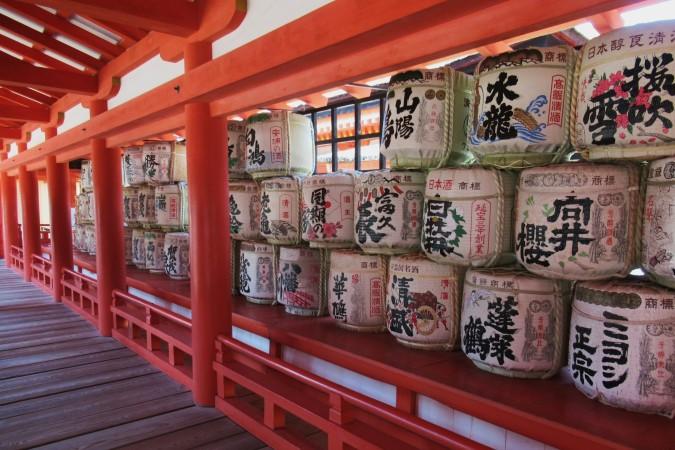
Overview of Hiroshima
History & Culture Influence
Hiroshima's history is deeply marked by the events of August 6, 1945, when the city became the target of the world's first atomic bomb attack. This tragic event left an indelible impact on the city and its people. Today, Hiroshima stands as a strong symbol of peace and healing. The Hiroshima Peace Memorial Park, a UNESCO World Heritage Site, commemorates this pivotal moment. Beyond its historical narrative, Hiroshima is a vibrant cultural hub. The city celebrates a diverse set of customs and events that emphasize its distinctive Japanese background. The influence of Japanese culture is evident in Hiroshima's architecture, art, and daily life, offering visitors a chance to experience traditional Japanese customs firsthand.
Interaction with The Locals
Hiroshima, a city in western Japan, has a population of approximately 1.2 million residents. As a vibrant and bustling urban center, it serves as the capital of Hiroshima Prefecture and is known for its historical significance, cultural heritage, and modern amenities. The city's diverse population contributes to its dynamic atmosphere, blending tradition with contemporary life.
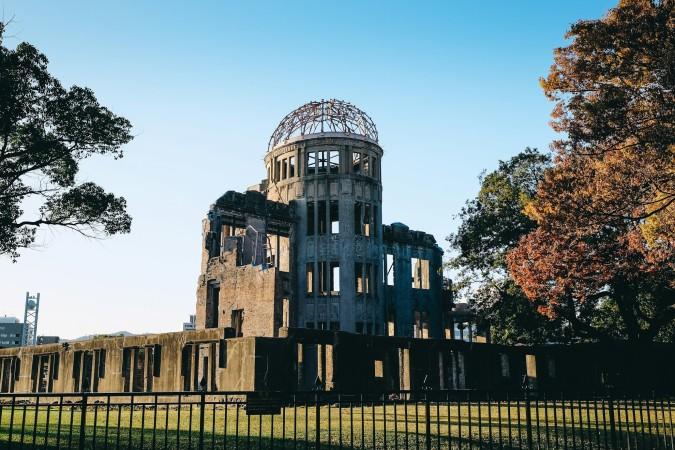
Hiroshima Peace Memorial Park - © Rap Dela Rea
Top Attractions in Hiroshima
Hiroshima Peace Memorial Park
The Hiroshima Peace Memorial Park is a must-visit for anyone traveling to the city. This expansive park, designed by architect Kenzo Tange, includes several important landmarks such as the Atomic Bomb Dome and the Peace Memorial Museum. The park’s tranquil setting and moving exhibits offer a reflective space to understand the city’s past and its commitment to peace.
Itsukushima Shrine (Miyajima)
A short ferry ride from Hiroshima takes you to Miyajima Island, home to the iconic Itsukushima Shrine. This Shinto temple, famous for its "floating" torii gate, is one of Japan's most photographed sites. During high tide, the torii gate seems to float on the sea, offering breathtaking views. The shrine, surrounded by lush forests and serene waters, provides a serene escape from the city.
Hiroshima Castle
Hiroshima Castle, often called Carp Castle, provides a look into Japan's feudal history. The castle’s impressive structure, rebuilt after its destruction during World War II, houses a museum that displays artifacts from the samurai period. Visitors can enjoy panoramic views of the city from the castle’s top floor, making it a fantastic spot for history enthusiasts and photographers alike.
Shukkeien Garden
For a peaceful retreat within the city, Shukkeien Garden is a beautiful example of traditional Japanese landscape design. This ancient garden from the Edo era boasts meandering walks, peaceful ponds, and finely maintained gardens. It’s an ideal place for a leisurely stroll or to experience a traditional Japanese garden setting.
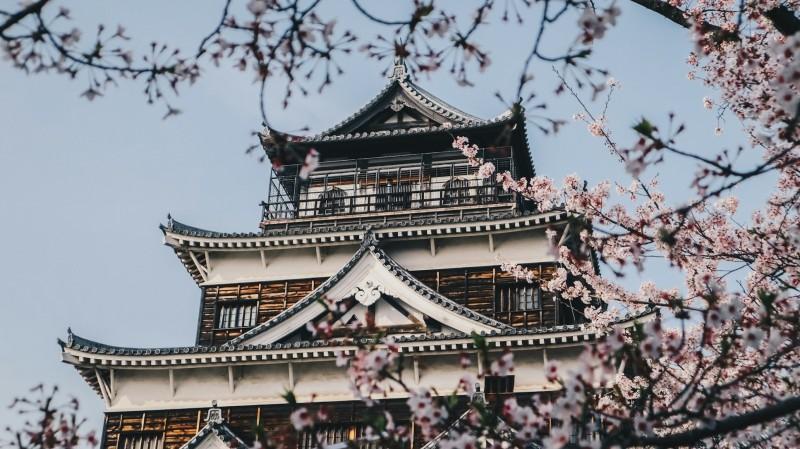
Hiroshima Castle - © Kenshi Kingami
Must-try dishes in Hiroshima
- Okonomiyaki: Hiroshima’s okonomiyaki is a savory pancake layered with cabbage, meat, seafood, and topped with a tangy sauce. A local favorite, it's cooked on a hot plate and customizable to your taste.
- Tsukemen: Tsukemen consists of cold noodles dunked in a hot, savory soup. This unique dish offers a refreshing twist and is often enjoyed with a variety of toppings.
- Soba and Udon: Try soba (buckwheat noodles) and udon (thick wheat noodles) in Hiroshima. Served in broths or stir-fried, these traditional noodles are comforting and flavorful.
- Hiroshima-style Goya Champuru: Goya Champuru, a local favorite, is a stir-fry of bitter melon (goya), tofu, pork, and veggies. Its unique bitter flavor combined with savory ingredients makes it a distinctive Hiroshima delicacy.
- Hiroshima-style Sushi: Hiroshima’s take on sushi often features fresh, local fish and seafood. Try Hamaguri sushi (clam sushi) or Anago sushi (sea eel sushi) for a taste of the city’s coastal bounty.
- Kaki Furai: Kaki Furai are breaded and fried oysters, offering a crispy exterior and tender interior. This dish showcases Hiroshima’s famed oysters in a deliciously crispy form, perfect for a snack or appetizer.
- Hiroshima-style Ramen: Hiroshima-style ramen has a clear, soy-based broth and thin, straight noodles. Topped with ingredients like sliced pork, green onions, and bamboo shoots, it’s a flavorful and satisfying bowl of noodles.
Looking for more adventures? Dive into Nikko, another famous destination in Japan, with our article here.
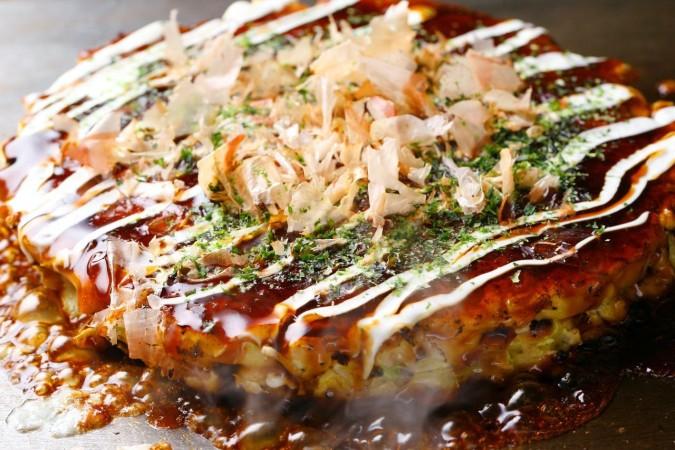
Okonomiyaki - © TokyoTreat
Festivals & Local Celebrations
Hiroshima Flower Festival
The Hiroshima Flower Festival is a vibrant celebration held annually in early May. This event transforms the city into a colorful floral display with parades, live performances, and flower-themed activities. Visitors can enjoy various entertainment options, including music, dance, and street food, all set against a backdrop of blooming flowers. The festival is a joyous occasion that highlights Hiroshima’s community spirit and appreciation for nature.
Miyajima Water Fireworks Festival
The Miyajima Water Fireworks Festival is a stunning event that takes place on Miyajima Island in August. This festival features a dazzling display of fireworks reflected in the waters surrounding Itsukushima Shrine. The night sky glows with bright hues, creating a wonderful environment. The festival also includes traditional music and food stalls, making it a memorable experience for both locals and tourists.
Hiroshima Carps Festival
The Hiroshima Carps Festival, held during the summer, commemorates the city's beloved baseball team, the Hiroshima Carp. This festival includes parades, performances, and various activities centered around the team and its fans. It’s a lively event that showcases Hiroshima’s sports culture and the passionate support for the Carp, adding a fun and energetic vibe to the city’s summer scene.

Miyajima Water Fireworks Festival - © Japan Web Magazine
What to Do in Hiroshima
- Visit the Hiroshima Peace Memorial Park: Explore the Hiroshima Peace Memorial Park, a moving tribute to the victims of the atomic bomb. The park includes the renowned Atomic Bomb Dome, the Peace Memorial Museum, and tranquil monuments.
- Visit Itsukushima Shrine: Take a trip to Itsukushima Shrine on Miyajima Island, renowned for its floating torii gate and stunning sea views. The shrine is a UNESCO World Heritage site and offers picturesque walking trails.
- Explore Hiroshima Castle: Discover Hiroshima Castle, also known as Carp Castle. The castle's ancient architecture and picturesque gardens offer an insight into the city's medieval history.
- Stroll through Shukkeien Garden: Relax in Shukkeien Garden, a historic landscape garden with tranquil ponds, traditional tea houses, and seasonal flora. It's an ideal location for a leisurely stroll and introspection.
- Miyajima Island Cruises: Enjoy a ferry ride to Miyajima Island for scenic views and cultural exploration. Besides Itsukushima Shrine, the island has hiking paths, friendly deer, and local handicraft.
- Experience Local Markets: Wander through Hiroshima’s local markets to sample fresh produce, seafood, and local delicacies. The bustling markets provide an authentic taste of Hiroshima’s culinary scene.
- Attend Local Festival: Join in the festivities at a local festival such as the Hiroshima Flower Festival or the Miyajima Water Fireworks Festival. These events showcase vibrant parades, traditional performances, and local culture.
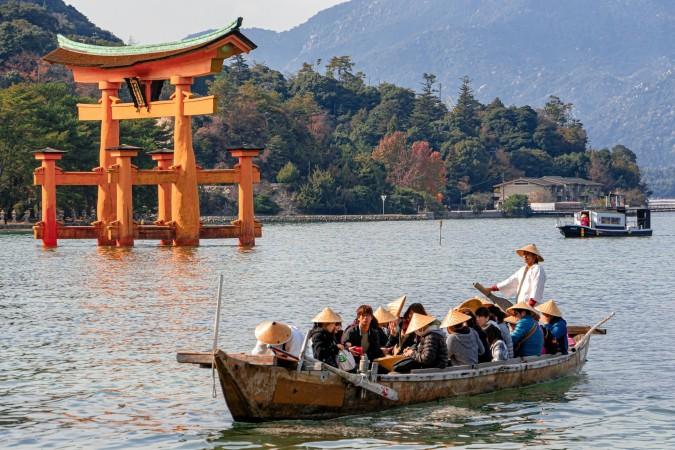
Visit the "floating" torii gate at Itsukushima Shrine - © Bing Hui Yau
Shopping in Hiroshima
Popular Shopping Districts
Hiroshima boasts vibrant shopping districts where visitors can find everything from high-end boutiques to local markets. The Hondori Shopping Arcade is a bustling pedestrian street lined with shops and eateries, perfect for browsing souvenirs and enjoying local snacks. Hatchobori is another popular area, offering a mix of fashion stores, electronics, and specialty shops.
Local Souvenirs
When shopping in Hiroshima, be sure to pick up local souvenirs such as traditional crafts and food items. Popular items include Hiroshima-style okonomiyaki sauce, handmade ceramics, and local sweets. These unique mementos capture the essence of Hiroshima and make for thoughtful gifts or keepsakes.
Marketplaces
Exploring Hiroshima’s marketplaces provides an authentic shopping experience. The Hiroshima Central Wholesale Market offers a glimpse into the local food scene, with fresh produce, seafood, and artisanal products. These markets are great places to experience the city’s culinary diversity and discover local flavors.
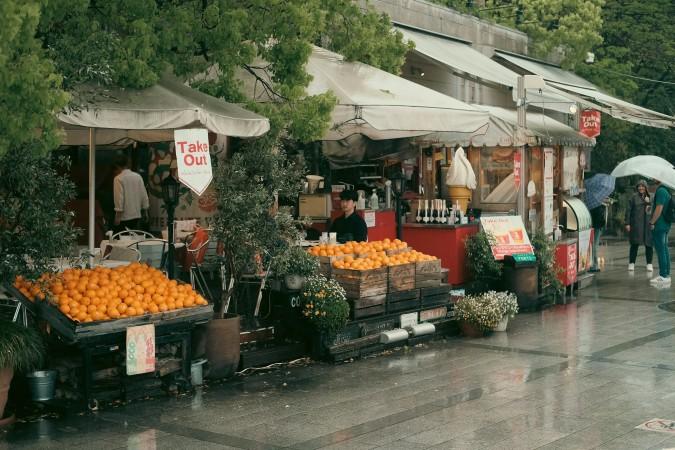
Strolling along the street for local souvenirs - © Vladyslava Andriyenko
Weather in Hiroshima: Best Time to Visit
Spring in Hiroshima
- Weather: Spring is one of the most popular times to visit Hiroshima. The city experiences mild temperatures ranging from 50-70°F (10-20°C) and low humidity, making it comfortable for sightseeing.
- Tourism Trend: This season is famous for its cherry blossoms, with iconic spots like Hiroshima Peace Memorial Park and Shukkeien Garden showcasing breathtaking floral displays. Visitors flock to see these beautiful blooms and participate in hanami (flower viewing) picnics, which are a highlight of the local culture.
Explore the unique charm of Nara, another must-visit place in Japan, in our article here.
Summer in Hiroshima
- Weather: Summer in Hiroshima brings hot and humid conditions, with temperatures often reaching 80-90°F (27-35°C).
- Tourism Trend: This season is lively with festivals such as the Hiroshima Flower Festival, which features colorful parades and cultural performances. Despite the heat, summer is also a great time to explore nearby attractions like Miyajima Island, where you can enjoy cooler breezes by the water and witness the Miyajima Water Fireworks Festival in August.
Autumn in Hiroshima
- Weather: Autumn is another favored time for travelers, with crisp and comfortable temperatures ranging from 60-75°F (15-24°C). The weather is an ideal opportunity for outdoor activities and sightseeing.
- Tourism Trend: The autumn foliage is particularly spectacular for sightseeing and photographing at places like Shukkeien Garden and Hiroshima Castle. This season also features various local festivals that celebrate the harvest and cultural traditions, adding to the city's charm.
Winter in Hiroshima
- Weather: Winter in Hiroshima is mild compared to many other parts of Japan, with temperatures typically ranging from 40-50°F (5-10°C). While it’s cooler, the weather is generally clear and dry.
- Tourism Trend: Although there’s less snow, the cool temperatures create a serene atmosphere perfect for visiting historical sites and enjoying hot dishes like Hiroshima-style ramen. Winter also offers a quieter time to experience local events and the city’s festive holiday decorations.
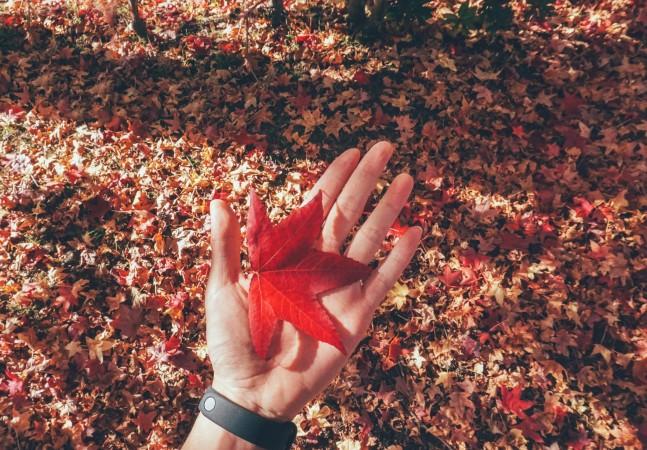
Autumn in Hiroshima - © HONG FENG
Culture Etiquette in Hiroshima
- Local Customs and Manners: In Hiroshima, as in the rest of Japan, politeness and respect are a must. It is usual to bow while greeting or thanking someone. Public manners are highly valued, so speaking quietly and keeping your phone on silent in public places is appreciated.
- Dining Etiquette: When dining, use chopsticks properly and avoid sticking them upright in a bowl of rice, as this resembles a funeral practice. It is respectful to say "Itadakimasu" before beginning your meal and "Gochisousama" after ending to express your appreciation toward your host.
- Shoes Off Indoors: When entering a home or certain traditional accommodations (like ryokans) and some restaurants, remove your shoes and switch to indoor slippers. This practice helps keep spaces clean and is a sign of respect.
- Handling Cash: When paying, use both hands to present money to the cashier. This is considered polite and shows respect for the transaction.
- Public Bath Etiquette: When using public baths (onsen or sento), thoroughly wash and rinse your body before entering the communal bath. Swimwear is not worn, and conversations should be kept quiet.
- Queueing: Follow the local practice of forming orderly lines at bus stops, train stations, and elevators. Respect the queue and wait your turn.
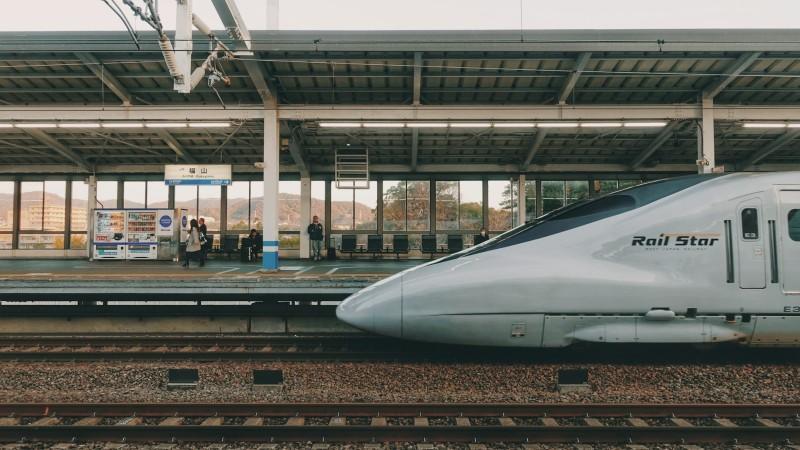
Shinkansen Station in Hiroshima - © Aika Kohama
Essential Travel Information
Getting Around Hiroshima
Hiroshima offers a well-connected public transportation system, including trams operated by the Hiroshima Electric Railway (Hiroden), which link major city areas and attractions, as well as buses and trains for broader coverage and connections to nearby cities. For added flexibility, visitors can rent a bicycle or car, though taxis are available and can be costly. Using ride-sharing apps or hailing cabs from designated stands is also common. To simplify travel, consider getting a Hiroshima Sightseeing Pass, which provides unlimited access to public transport and discounts at various local attractions.
ATM & Banking Services
ATMs are conveniently scattered across Hiroshima, including in convenience stores like 7-Eleven and FamilyMart, making it easy to access cash. While international credit and debit cards are widely accepted, having some cash on hand for smaller purchases is advisable. For banking services, major banks around Hiroshima provide a range of services, including currency exchange with a clear reasonable exchange rate.
Where to Stay in Hiroshima
Hiroshima offers diverse accommodation options to fit various preferences and budgets, including luxury hotels, mid-range hotels, guesthouses, and traditional ryokans, each providing unique experiences from modern amenities to traditional Japanese hospitality. For convenience, staying in central Hiroshima City is ideal, with areas like Nishi Ward and Hondori providing easy access to major attractions, shopping, and dining. To secure the best options, especially during peak times like cherry blossom season or festivals, it's advisable to book in advance.
Articles for you

Explore Yala National Park - Sri Lanka Travel, Asia
Tucked away in Sri Lanka’s southeastern corner, Yala National Park is where wild nature meets deep tradition. Known worldwide for its leopard population, the park is also home to elephants, sloth bears, crocodiles, and hundreds of bird species. Beyond wildlife, Yala opens doors to a cultural landscape dotted with ancient temples, Buddhist ruins, and coastal villages. For travelers seeking more than just a safari, Yala offers a chance to explore eco-tourism, local communities, and sacred heritage sites.
Population: The Yala National Park area doesn’t have a human population.
Economy: The economy around Yala National Park thrives on a blend of eco-tourism, agriculture, and local services. Safari tours, eco-lodges, and cultural experiences drive steady income for nearby towns like Tissamaharama and Kataragama, supporting thousands of families.
Landmarks: Famous for Block I of Yala and wildlife encounters, including elephants, sloth bears, crocodiles, and exotic bird species.

Explore Galle - Sri Lanka Travel, Asia
Nestled on Sri Lanka’s southern coastline, Galle is a vibrant city where history meets the sea. Its cobbled streets, colonial architecture, and serene beaches make it a must-visit destination for travelers seeking a blend of culture, adventure, and relaxation. A UNESCO World Heritage site, Galle captivates visitors with its Dutch Fort, bustling markets, and friendly locals. Whether you’re exploring the ramparts at sunset or savoring fresh seafood by the shore, Galle promises an unforgettable journey into Sri Lanka’s heritage.
Population: Approximately 113,000 in 2023.
Economy: Galle’s economy thrives on tourism, trade, and fisheries. The city’s historic fort, colonial architecture, and coastal charm draw thousands of international visitors each year, making tourism its main economic driver. Fishing remains vital for local livelihoods, supplying fresh seafood across the region.
Landmarks: Famous for the Galle Fort, Dutch Reformed Church & Maritime Museum, and Unawatuna Beach.

Explore Bentota - Sri Lanka Travel, Asia
Nestled along Sri Lanka’s southwestern coast, Bentota is a tropical paradise that blends golden beaches, vibrant culture, and thrilling adventures. Famous for its calm waters, luxury resorts, and scenic river estuary, Bentota has become a top destination for travelers seeking both relaxation and authentic experiences. From serene beach walks at sunrise to adrenaline-pumping water sports, this coastal town offers a perfect balance of leisure and exploration. With its proximity to Colombo and Galle, Bentota is easy to reach, making it an ideal stop for both short escapes and extended holidays.
Population: Approximately 37,000 in 2023.
Economy: Bentota’s economy thrives mainly on tourism, which drives local businesses such as hotels, restaurants, and wellness retreats. The town also benefits from fishing, coconut cultivation, and handicrafts like wood carving and batik textiles. Many residents rely on the growing demand for water sports and Ayurvedic treatments, making tourism the backbone of both income and employment in the area.
Landmarks: Famous for Bentota Beach, Bentota River Safari, and Kande Vihara Temple.

Explore Mirissa - Sri Lanka Travel, Asia
Mirissa is a charming coastal town on Sri Lanka’s southern shoreline. Known for its golden beaches, turquoise waters, and vibrant marine life, it has become a must-visit stop for travelers exploring the island. Many come for whale watching, surfing, and sunset views at Coconut Tree Hill, but Mirissa offers much more than postcard beauty. The fishing boats you see anchored by the bay carry generations of stories. Local traditions, delicious cuisine, and a laid-back rhythm of life shape every visitor’s experience.
Population: Approximately 4,700 in 2023.
Economy: Mirissa’s economy is largely shaped by its coastal location. Fishing has long been the backbone of local livelihoods, with generations relying on the Indian Ocean for income. In recent decades, tourism has become the main driver of growth, thanks to whale watching, surfing, and beachside hospitality.
Landmarks: Famous for Mirissa Beach, Coconut Tree Hill, and Parrot Rock Bridge.

Explore Nuwara Eliya - Sri Lanka Travel, Asia
Tucked away in the Central Highlands of Sri Lanka, Nuwara Eliya is often called “Little England”. With its rolling tea plantations, cool misty mornings, and colonial charm, this mountain town feels like a step into another world. Travelers come here to breathe fresh air, walk through flower gardens, sip the finest Ceylon Tea, and enjoy a pace of life far from the island’s busy cities. Whether you’re drawn by scenic landscapes, heritage architecture, or the warmth of its people, Nuwara Eliya is a destination that blends nature, culture, and history in perfect harmony.
Population: Approximately 781,000 in 2023.
Economy: Nuwara Eliya’s economy thrives mainly on tea production, as it sits in the heart of Sri Lanka’s central highlands, famous worldwide for Ceylon Tea. The city also benefits from a growing tourism industry, attracting visitors with its colonial charm, cool climate, and scenic landscapes.
Landmarks: Famous for Gregory Lake, Hakgala Botanical Garden, and Victoria Park.

Explore Sukau - Malaysia Travel, Asia
Nestled on the banks of the Kinabatangan River in Sabah, Malaysian Borneo, Sukau is a destination where wildlife, culture, and conservation come together. Known as one of Asia’s top spots for river safaris and eco-tourism, this quiet village offers a front-row seat to encounters with Bornean orangutans, pygmy elephants, proboscis monkeys, and exotic birdlife.
Population: Approximately 1,400 in 2019.
Economy: Sukau’s economy is shaped by its riverine location and natural resources. Traditionally, the Orang Sungai community relied on fishing, small-scale farming, and forest gathering for their livelihood. Today, the village has shifted toward eco-tourism, with river cruises, jungle trekking, and homestays providing income.
Landmarks: Famous for the Kinabatangan River cruises, Gomantong Caves, and Ox-bow lakes and wetlands.
